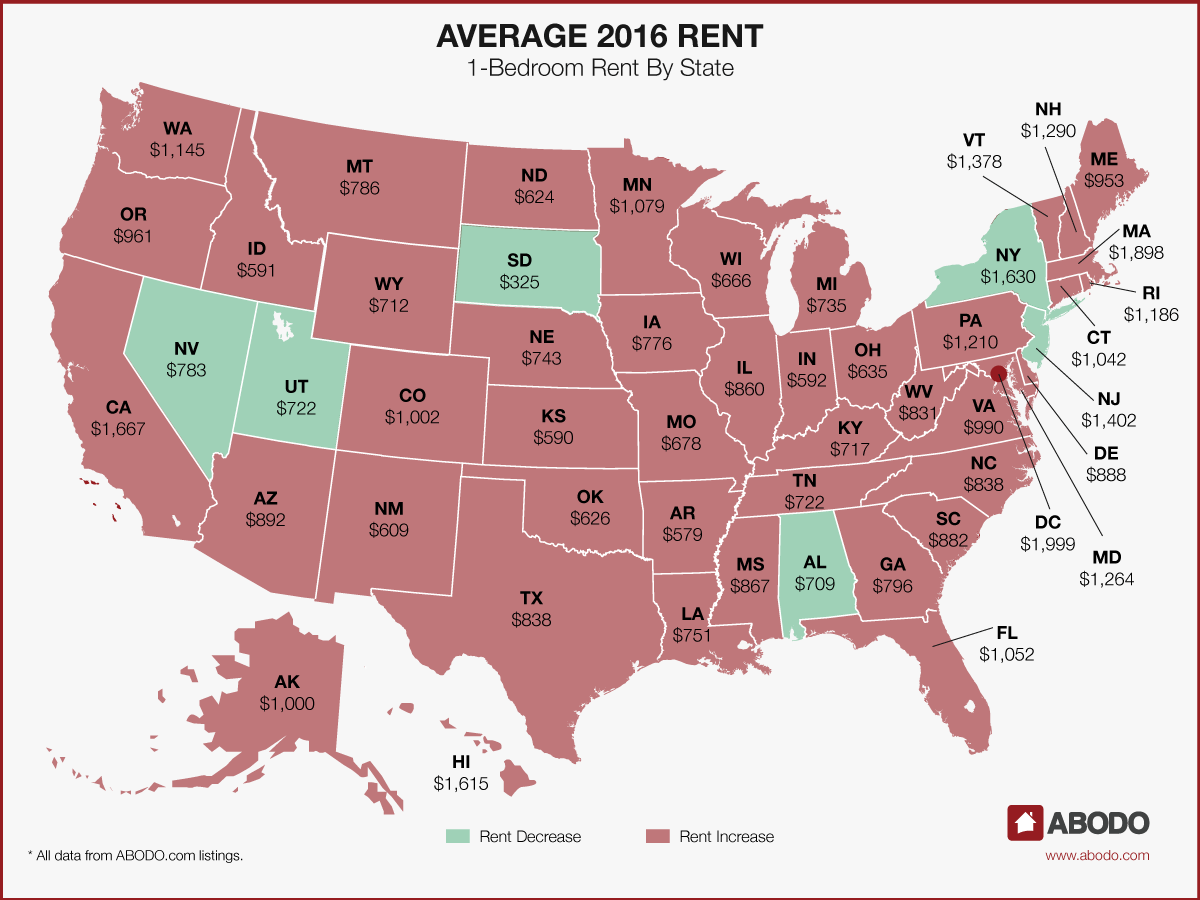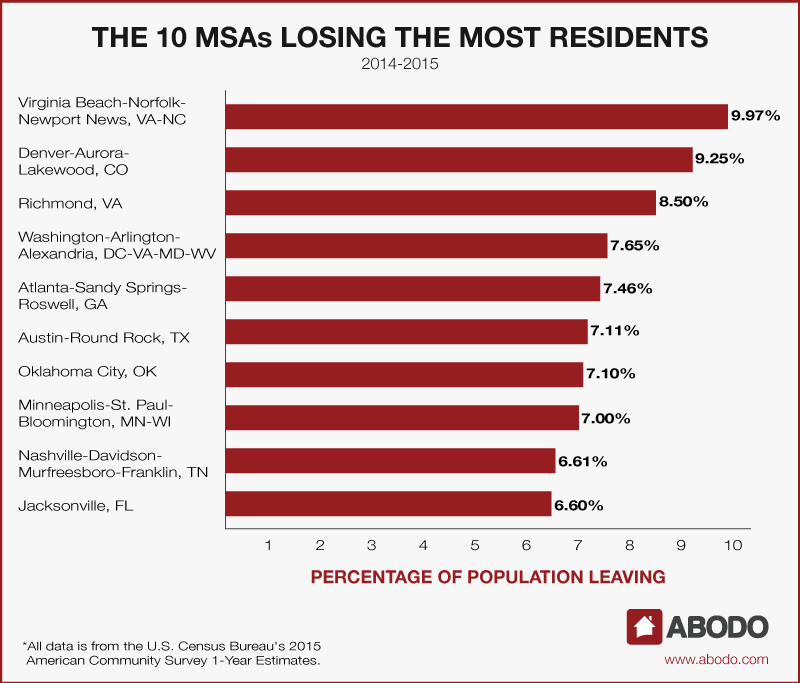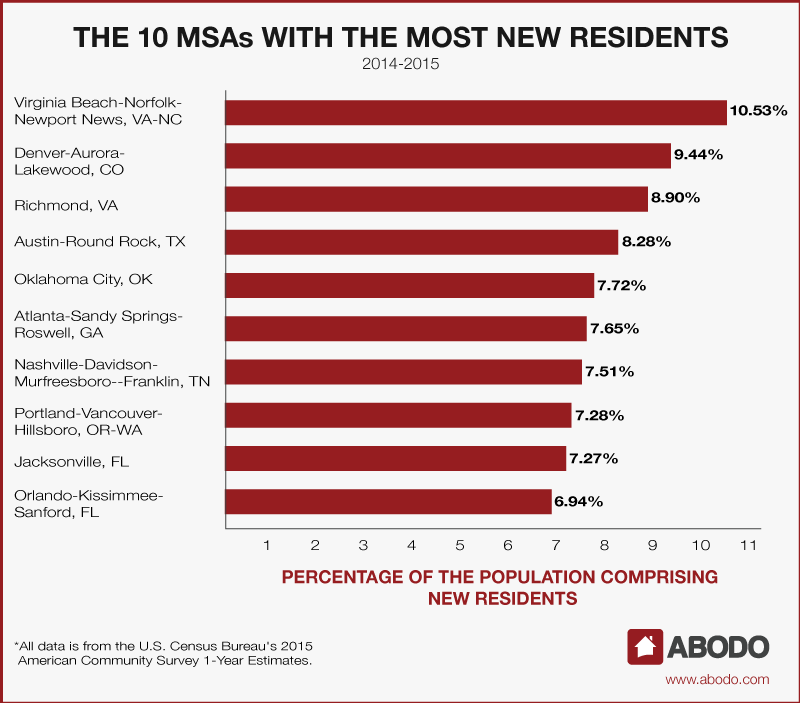2016 was a year of ups and downs. Among these highs and lows were rent prices, job growth, population size and overall cost of living. A high income in one city may barely help you pay the bills in another. While we probably all can agree that Denver is the best place to live (don’t take our word for it, there’s proof), it has many wondering just how popular Denver is and what that means for its current residents. Over the past few years, ABODO conducted several studies, and while the research was conducted nationwide, we’re focusing on the results for Denver.
ABODO looked at rent for one-bedrooms nationwide and analyzed the cost of rent in each state. The study revealed that the average renter paid $1,001 per month in 2016. The average monthly change was .67 percent, meaning rent increased roughly $85 in the year. Colorado barely felt an increase in rent, averaging $1,002 per month.
So what lies ahead for us in 2017? Good news for us Denver citizens — we did see a sizable decrease in rent this January with a fall of -6.2 percent for the month. But with just one month under our belt, that doesn’t mean rent prices will continue to fall in 2017. That will be determined by the supply and demand of housing, the economic status of the country under a Trump administration and other variables.
But if rent does decrease, or at the very least remains stable, one explanation could be that Denver is losing its residents just as fast as new ones are coming in. Of the 50-most populated areas in the country, Denver ranked number two for losing the most (9.25 percent of the population). However, Denver also ranked number two at gaining the newest residents (9.44 percent of the population). So don’t expect less people, but also don’t get freaked out when you hear that hundreds of thousands of people are moving to the Mile High.
But was causes this fluctuation in residents? The majority of the time it’s for a job or career change. With the average American moving more than 11 times in their lifetime and at least 43 percent of those movers being the millennial age group, what are these jobs, and are they really worth moving for?
ADOBO’s research on the best cities for job seekers revealed the occupation that saw the most job growth was “Community and Social Services,” (think: social workers and counselors). ABODO looked at the top 25 cities based off of population and job density and compared it to the top five fastest growing occupations between the years 2012 to 2015. Denver, ranking number 19 on the list, proved to hold its own for three of the five occupations.
Denver ranked the eighth best city for the ‘Computer and Mathematics’ which saw a 14.49 percent increase in the industry. The ‘Construction and Expansion’ saw a 9.24 percent increase with Denver ranking second best city. Are we surprised though with all our natural gas resources? However, if you’re like most of the millennials in Denver and are into the artsy and media scene (we’re looking at you RiNo), then Denver is one to consider. It ranked as the ninth best city for the ‘Art, Design, Entertainment, Sports and Media’ occupation. Above us? Los Angeles, Austin and Nashville to name a few.
Before you move to the city with the cheapest rent and get a job that has is growing by the day, there’s still the issue of affordability. Simply put, don’t bite off more than you can chew. While it’s recommended that your rent should be 30 percent of your income, nearly half a million renters don’t listen and face the heavy housing burden, ABODO research reveals. The study reveals some figures and facts, and just because Denver didn’t make the list of some of the top cities, that doesn’t mean renters here don’t feel it. The cost of rent prices combined with city living and annual income has some pushing past their spending limit. With the burden of these daily necessities, other life expenditures such as food, utilities and any other bills that may be, start to weigh heavily us all. Although the 30 percent rule may not ideal, it is doable and will literally pay off in the long run.
Overall, the cost of living and the price we pay is around the national average. While prices may rise in 2017, it’s a slight hill for Denver residents.



